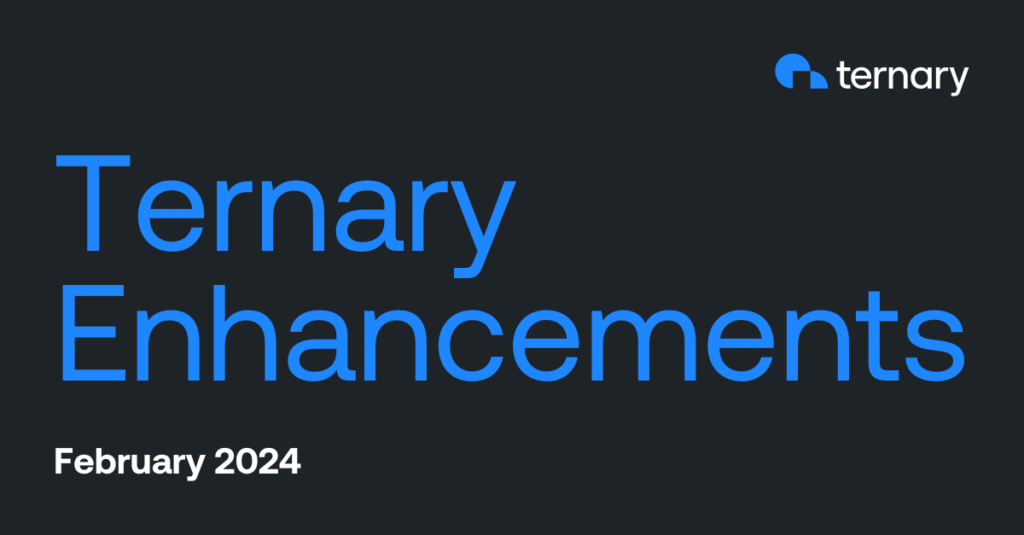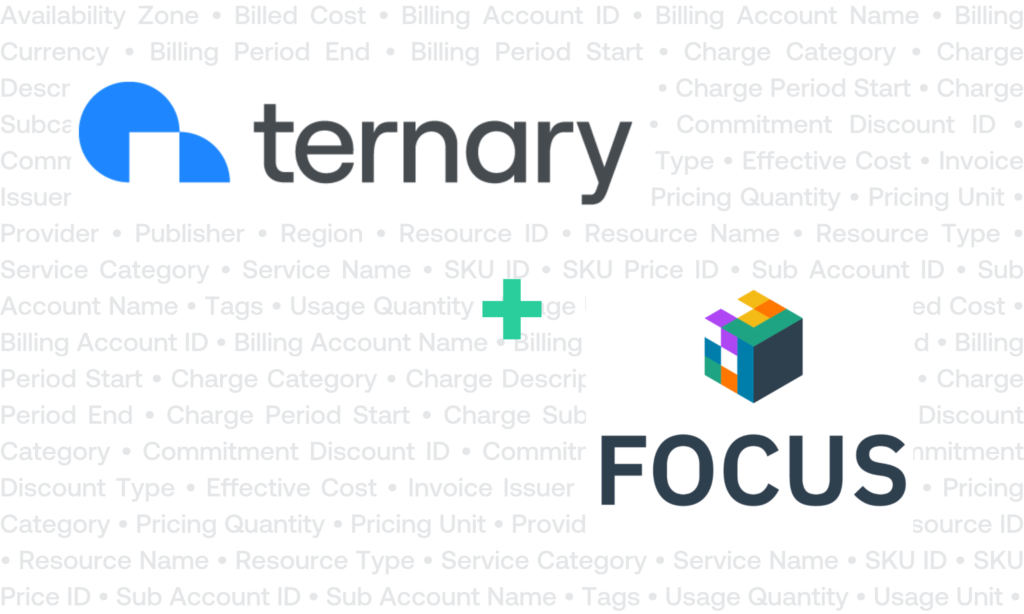On February 1, 2024, I gave a presentation to the Wall Street Technology Association (WSTA) about how to achieve cloud cost management: by identifying the roots of overspend and fostering a culture of accountability, awareness, and collaboration. Below is a recap of ideas I shared. Check out the video to learn more:
The rise of cloud computing
Since the advent of AWS, in 2006, cloud computing has revolutionized business by introducing the concept of infrastructure as an API. With the ability to access and provision computing resources on demand, developers have enjoyed unparalleled scalability, increased agility, and faster time to market. As cloud service providers (CSPs) have proliferated to include Google Cloud Platform, Microsoft Azure, Oracle Cloud Infrastructure, and others, businesses have increasingly migrated their workloads to the cloud, lured by the idea that they could not only improve efficiency but also reduce their costs.
Yet, as with any revolution, this one has delivered some unwelcome side effects. Instead of automatically reducing costs by moving to the cloud, many companies are now overspending on cloud services. For companies spending millions or even billions of dollars on cloud services, managing these costs is an urgent challenge.
The problem: cloud overspend
Before we dive into specific drivers of cloud overspend, let’s get a sense of the scale of the challenge. Over half of surveyed companies who spend money in the cloud consider waste or unused resources to be their top priority. With that in mind, we’ll explore the key drivers of cloud overspend.
Drivers of cloud overspend
If you can identify factors contributing to cloud overspend, you can more easily implement solutions. So let’s take a closer look at these drivers.
Shift in decision-making power
Once companies transition their workloads to the cloud, responsibility for spending decisions shifts from high-level leadership in Finance and Engineering (who might meet once per quarter) to developers. The good news about that shift is that it empowers developers to provision resources and bring products to market relatively quickly. The bad news: The lack of governance and budgetary control can lead to overspending. CSPs’ dynamic billing files—where every API call incurs a cost—exacerbate the risk that developers will unknowingly overspend.
Lack of visibility and tooling
The complexity of billing data generated by CSPs—often containing millions of line items—makes it challenging for companies to gain visibility into their spend. The lack of robust tooling makes it harder to attribute, optimize, and reduce costs.
Increased complexity in multi-cloud environments
The rise of multi-cloud strategies adds another layer of complexity to cost management. With companies leveraging multiple CSPs, tracking and optimizing spend across different platforms becomes an even more daunting task. Each CSP has its own billing system and APIs, making it challenging to compare “apples to apples” and gain a holistic view of costs. (Read more about how Ternary is contributing to efforts to address this problem.)
The FinOps approach: a formula for success
Now that we understand how various factors can drive cloud overspend, let’s explore the dominant solution for today’s problem of cloud overspend: FinOps. A portmanteau of “Finance” and “DevOps,” FinOps is an open-source framework of best practices, education, and standards. Emphasizing continuous visibility, efficiency, and collaboration between finance, engineering, and business teams, FinOps furthers the discipline of cloud financial management, helping companies maximize the business value of their cloud investments.
Implementing FinOps practices
Whether through CSP native billing consoles, home-grown tools, or third-party solutions, companies seeking to better manage their cloud costs should implement FinOps practices. (The FinOps Foundation is a great resource for learning about managing cloud spend.) Here are some key priorities:
- Make your spend visible and attributable in your organization
- Budget properly
- Derive your unit costs
- Implement cost optimization suggestions from CSPs or third-party tools (as appropriate for your business)
- Encourage ongoing (weekly or even daily) collaboration between Finance and Engineering on optimization efforts
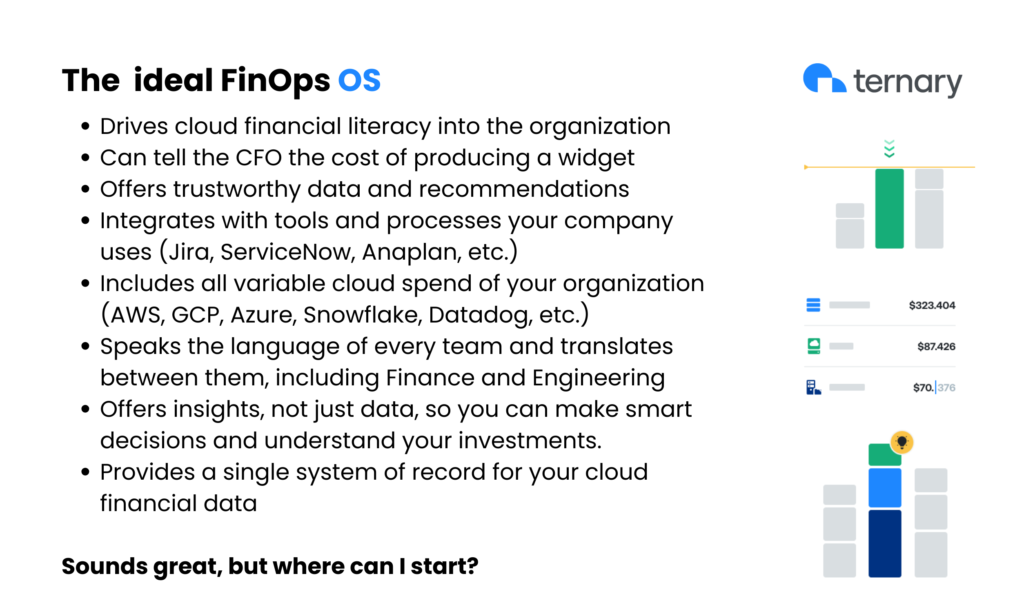
Effectively optimizing costs requires a proactive approach. Here are some steps you can take to get started:
1. Join the FinOps Foundation
By joining the FinOps Foundation, you can learn from a wealth of insights about cloud financial management. You also gain access to a community of cloud FinOps professionals with whom you can share best practices.
2. Foster collaboration around FinOps
Collaboration between finance and engineering teams is crucial for successful cost optimization. Team up with counterparts to align goals and create a culture of cost consciousness.
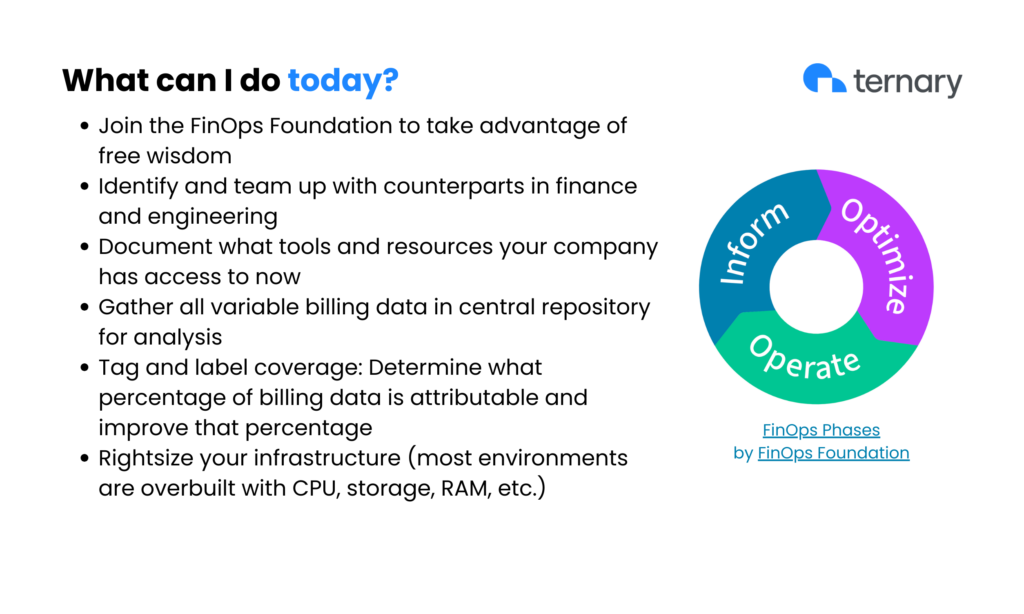
3. Evaluate your company’s existing tools
Assess the tools and resources available within your organization for cloud cost management. Determine the coverage and accuracy of your company’s tag and label data to improve attribution. Identify any gaps and explore third-party FinOps solutions to supplement existing tools.
4. Rightsize your infrastructure
Review your infrastructure and identify inefficiencies. Are any of your environments overbuilt, resulting in unnecessary headroom or waste? Rightsize your resources by adjusting CPU, storage, and RAM based on what you’re actually using and how efficient that usage is for meeting your business goals. Additionally, optimize scheduling to reduce idle workloads.
Looking ahead
While implementing short-term cost optimization strategies is crucial, it’s equally important to implement FinOps practices continuously, with a long-term vision for infrastructure modernization. Here are some additional strategies to tame cloud overspend.
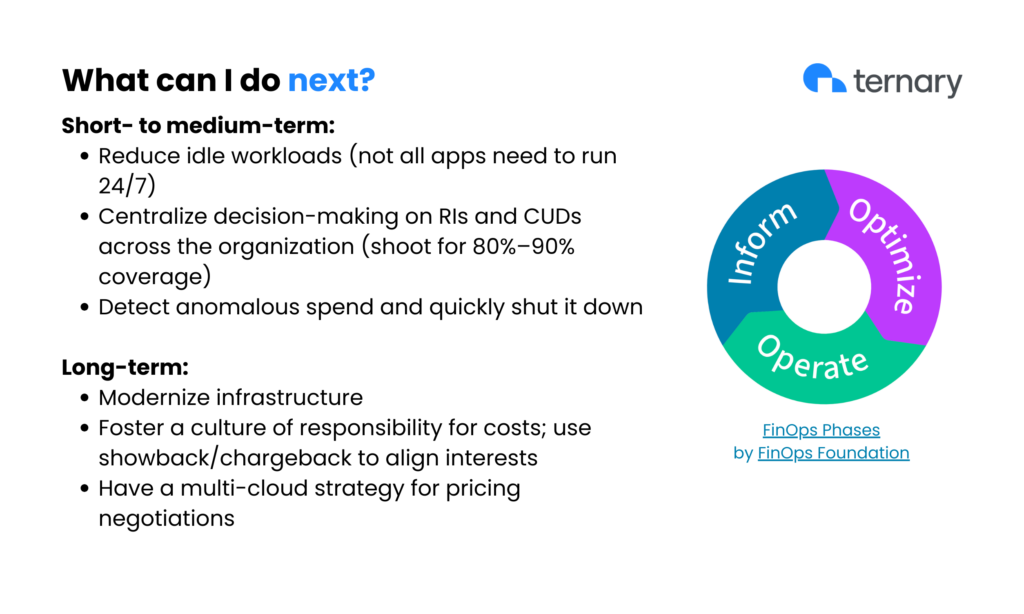
- Centralize decision-making
Consolidate purchasing decisions of cloud resources to improve cost control. Aim for 80% to 90% coverage across your business (e.g., of reservations vs. on-demand resources) to lock in savings. A dedicated FinOps team combining finance and engineering expertise can help drive this centralization.
- Detect anomalous spend
Using AI and ML where possible, move quickly to shut down out-of-pattern spending that’s misaligned with business goals.
- Take the long view
Just like the development and deployment of software, cloud cost management is a continuous process. To unlock long-term success, companies need to prioritize ongoing cost optimization.
- Foster a culture of positive accountability
Within and between your organization’s teams, create a culture of cost consciousness and responsibility. Encourage showback and chargeback practices to align everyone’s interests and promote transparency. By emphasizing accountability and the power to effect positive change, teams will feel more encouraged to actively contribute to cost optimization efforts.
- Leverage a multi-cloud pricing-negotiation strategy
Having a multi-cloud footprint provides bargaining power. Explore the benefits of different CSPs for specific technologies—then use that knowledge to secure better rates.
FinOps: a powerful solution
We hope you find these insights valuable in managing your company’s cloud costs. By adopting FinOps best practices, companies can understand drivers of overspending and take proactive steps to regain control and drive higher profitability.
If you have questions or would like to learn more, feel free to reach out to us. Happy optimizing!


